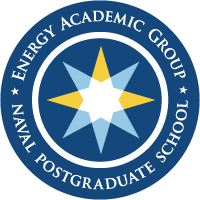March 8, 2022 - Energy Academic Group
Prospects for New Energy Technologies and Applications for the Naval Services
Paul M. Dabbar
Center on Global Energy Policy
School of International and Public Affairs
Columbia University
Abstract
Significant new energy technologies have been developed over the last generation, which have increased energy availability, reduced costs, and reduced emissions. A new wave of energy technologies is on the horizon that will add even more options. Many of these technologies such as hydrogen, advanced nuclear, beyond lithium-ion batteries, solar generated fuels, and fusion could make important impacts for defense applications.
Biography
The Honorable Paul M. Dabbar is a Distinguished Visiting Fellow at Center on the Global Energy Policy at Columbia University. He is also co-founder and CEO of Bohr Quantum Technology, a Pasadena, CA, based company focused on developing quantum teleportation technologies for the emerging quantum internet.
Prior to that, he was Under Secretary for Science at the U.S. Department of Energy, leading the Department’s efforts in fundamental energy, science, and commercialization of technologies. He managed 65,000 people and deployed $15BN p.a. at the seventeen national labs, U.S. universities, and international collaborations including at CERN, the International Space Station, and South Pole Station. DOE programs included the largest funder of research and development for new energy technologies, various areas of science including chemistry, materials, physics, supercomputing, and biology, and supported various Department of Energy defense programs, including Naval Reactors, strategic weapons, and quantum technologies.
He is on the board of Chicago-based Power and Digital Infrastructure Corporation, is member of the Council on Foreign Relations, and is a contributor to the Wall Street Journal and Fox Business. He has also traveled to the geographic North and South Poles: to the North Pole by submarine to conduct environmental research and defense operations while in the Navy, and to the South Pole in support of high energy physics missions at South Pole Station. He served as a nuclear submarine officer out of Mare Island, CA, and Pearl Harbor, HI. He is a graduate of the U.S. Naval Academy and Columbia University.

